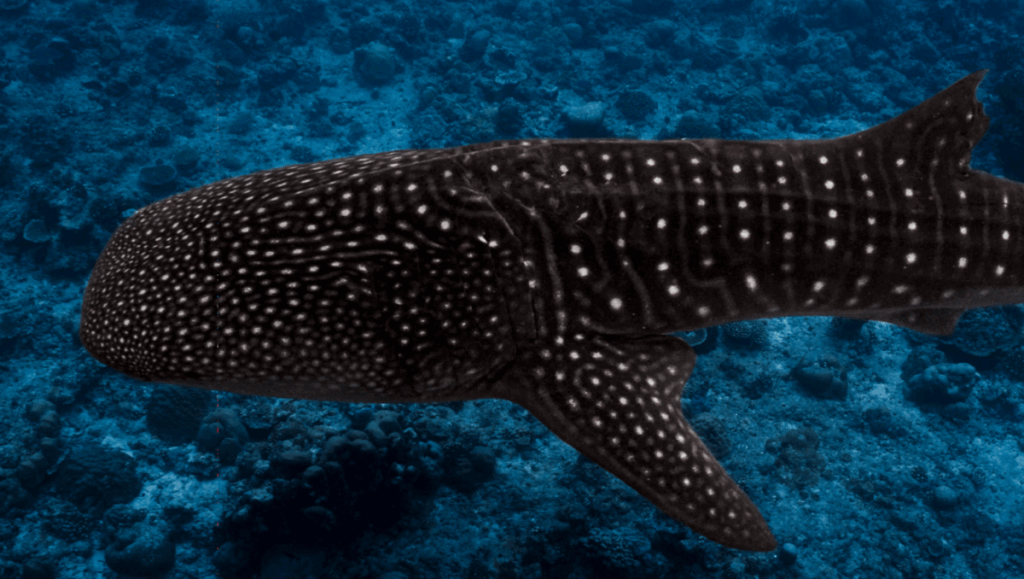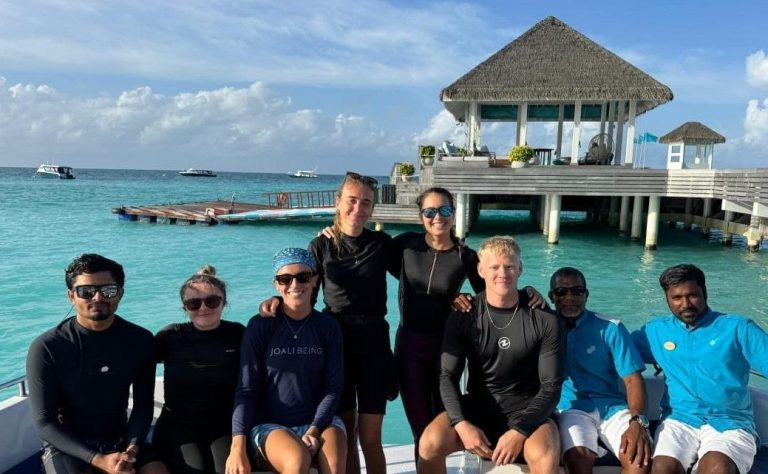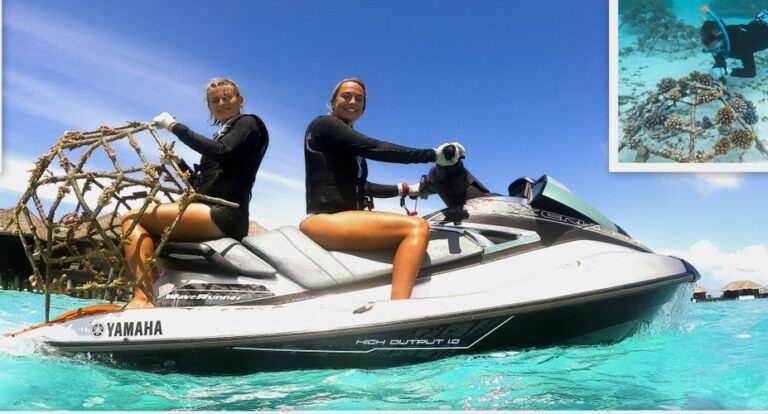Maldivian dive guide helped identify this whale shark in partnership with the Maldives Whale Shark Research Programme
This is Dhalhukan, the 800th whale shark officially identified in the Maldives. A dive guide named Dhalhey, who works for Scuba Spa luxury liveaboard, spotted Dhalhukan and logged photos of him for the Maldives Whale Shark Research Programme’s database.
Maldives Whale Shark Research Programme (MWSRP) is a research-based conservation charity and Maldivian NGO. It’s dedicated to studying whale sharks and fostering community-focused conservation initiatives in the Maldives. People working in the Maldives can get involved by sharing information from their whale shark sightings. But visitors can get involved too, by volunteering to join them on an expedition aboard their research vessel.
Dhalhey, who spotted Dhalhukan in Huvadhoo Atoll, is one of the MWSRP’s Big Fish Network contributors. The Maldivian dive guide decided to name the Big Fish Network’s 800th recorded whale shark after his own nickname.

The Big Fish Network enables members of the Maldivian tourism industry, like dive guides, to become volunteer citizen scientists. Today, there are 239 registered members in the Big Fish Network in the Maldives.
MWSRP’s Lead In-Field Coordinator, Chloe Winn, said: “We’re very excited as a team to have documented 800 whale sharks and counting across the Maldives.
“They are highly mobile, often pelagic, sharks – so being able to document their distribution across the Maldives, aided by photo IDs from citizen scientists, is a really positive thing”.

Each whale shark has a unique spot pattern on their pectoral flank and sides. This helps MWSRP and Big Fish Network contributors to identify individuals. The method is non-invasive and helps scientists map the distribution of these sharks and understand more about their ecology.
These gentle, filter-feeding whale sharks are not actually whales, despite the name. They are technically both fish and sharks. As such, they are both the largest shark and the largest fish in the ocean – hence the MWSRP’s name, the ‘Big Fish Network’.
Contributors can submit whale shark encounter information and photographs to the Big Fish Network web portal. The portal helps streamline data collection and ensures the information from contributors reaches the MWSRP’s central database efficiently. This data allows scientists to gain more insights into whale shark behaviour, movement patterns, and population dynamics. It can then help inform conservation strategies and management decisions.
Since WS800 Dhalhukan was added to the database, MWSRP reports a further 12 individuals have already been added, too.
You may also enjoy: Stargazing and whale sharks in the Maldives





